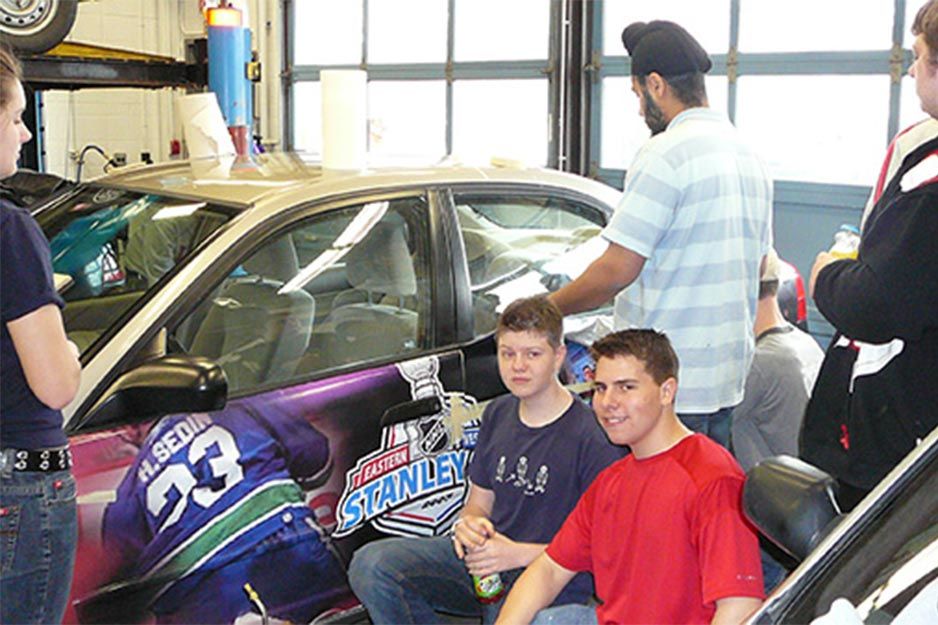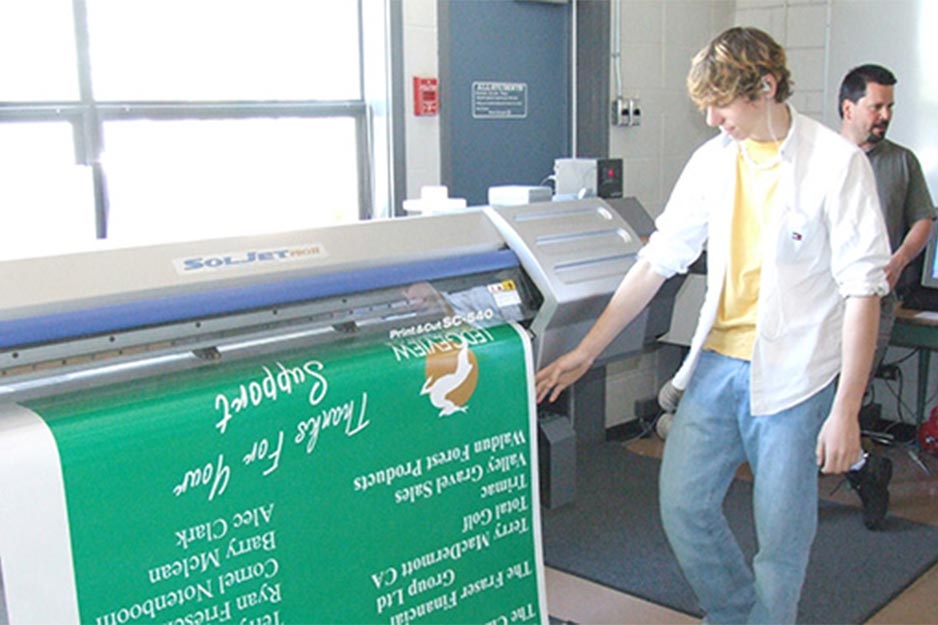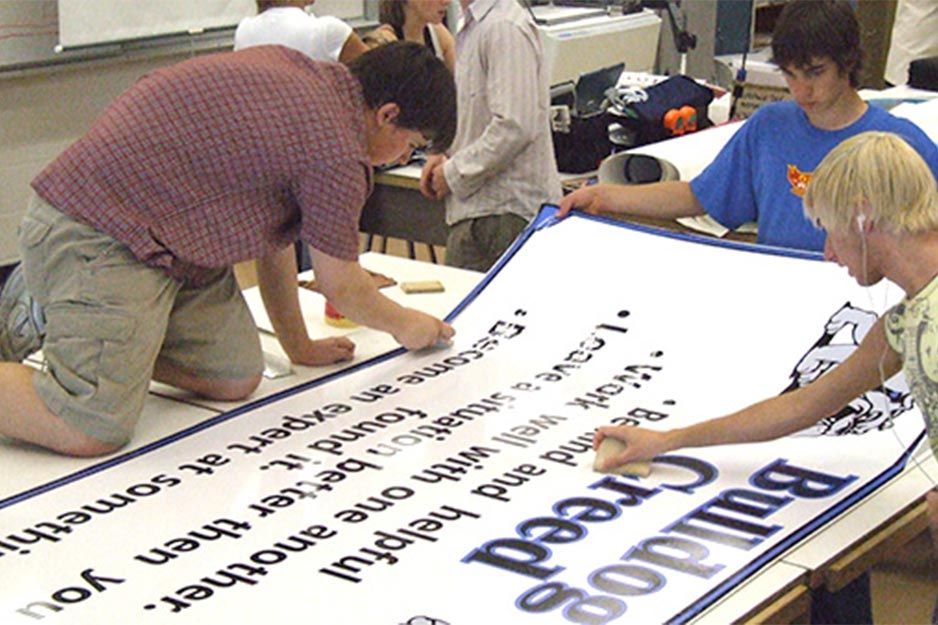Giving Vocational Students the Technological Edge
W.J. Mouat Secondary School | Abbotsford, British Columbia
David Liversidge and Patricia Beck, instructors at W.J. Mouat Secondary School in Abbotsford, British Columbia, believe in engaging their students through technology. “We are fortunate to have state-of-the-art equipment that keeps our students interested and provides skills relevant for today’s workplace,” said Liversidge.
Liversidge heads the school’s Trades & Technology Education Department, where approximately one third of W.J. Mouat’s 1,600 students take vocational courses ranging from woodwork to food sciences.
Liversidge teaches one of the most popular courses: vinyl graphics and signmaking. Every year he leads 170 students through the basics of signmaking.
Liversidge began the class as a drafting design course ten years ago. "If the students finished their assignments early, I would let them use the Roland DG cutter," said Liversidge. "I found they were working extra fast just so they could make decals."
Anchoring the course is a Roland DG SOLJET 54" large format printer/cutter.
“The print and cut feature on the SOLJET is tremendously helpful,” said Liversidge. “The students can finish their projects in one workflow.”
The class produces signage for the school, including banners for sport teams and event signs, as well as producing 100-150 projects each year for local nonprofits. The students also wrap one or two vehicles every year. Patricia Beck’s students use the benchtop mill in classes such as 3D Drafting and Design, and Advanced Design.
The Roland DG MDX is the first CNC machine most of her students have ever seen, much less used. “The MDX is powerful, accurate and easy to use, which makes it a great teaching tool,” she said.
Pat starts her students off with a simple wooden coaster milled on the MDX. By the end of the semester, some of her students are using the machine to mill their own designs. Senior Nathan McGuffin designed an art deco clock and milled a prototype of the clock body on the MDX, then milled the final clock body in dark wenge wood with a lighter tiger wood in the middle for contrast.
“Our students typically do really well in district competitions because they can explain exactly how they developed their model,” said Pat. “It’s amazing to watch them progress from working on simple pre-designed projects to milling their own designs on the MDX,” she said.
Liversidge wants to see more advanced technology in education. “I see so much value in this equipment,” he said. “Why wouldn’t you have it in every school?”




